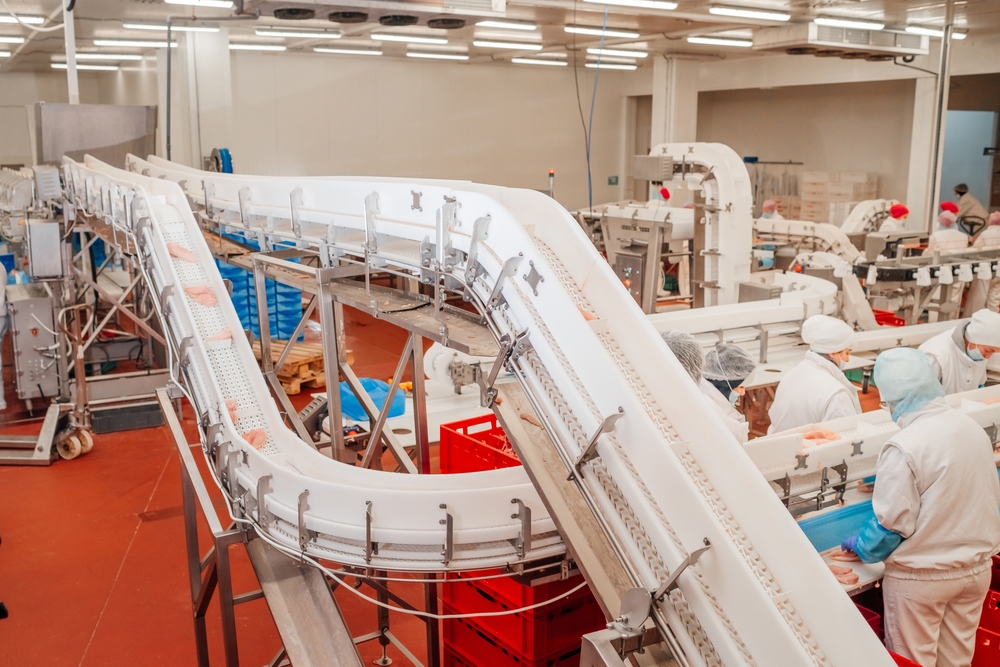A Decarbonization Pathway for Food Processors

Food processors can use cogeneration-based microgrids and carbon capture to drive facility emissions toward net zero and achieve corporate ESG goals.
Meat, poultry, and other food processors are facing a sustainability challenge. At the corporate level, many have set robust environmental, social, and corporate governance (ESG) goals, with fast-approaching emission reduction deadlines.
The best way to tackle carbon emissions is at the source. Unison Energy can provide a custom microgrid on-site at your food processing facility to get your company on the path to carbon neutral.
Our proven solution is based on highly efficient cogeneration technology that uses fuel to generate both electricity and heat. Food processors are excellent candidates for cogeneration, due to their high thermal loads, as well as their ability to produce biogas on-site from organic waste materials that would otherwise be costly to discard. We can also integrate carbon capture and renewable energy technologies to get your site closer to zero carbon.
Below is a step-by-step explanation of how a food processing plant can create a sustainable “circular economy” for its energy needs, while slashing both carbon emissions and utility bills.
Step 1: Implement an Advanced Microgrid
Food processors should implement advanced microgrids that include combined heat and power (CHP) to reduce emissions, as well as solar panels if space is available.
Food processing facilities face a tough challenge to reach net zero, as thermal processes are typically 40-60% of the total carbon footprint. CHP systems are an ideal solution, because they burn fuel on-site to generate both electricity and thermal energy. CHP offers 60-80% efficiency and can have a major impact on carbon intensity, reducing a site’s emissions between 20-60%.
For food processors with sufficient land available, Unison Energy can incorporate solar and battery storage to reduce emissions by an additional 10-20%.
By way of example, we calculated that a food processor in Iowa could reduce its direct greenhouse gas emissions by 7,406 tons or 67%, and maintain its Scope 2 emissions at levels close to neutral, by implementing a CHP system. We found another food processor in Missouri could reduce total greenhouse gas emissions at its facility by 68%.
Step 2: Deploy digesters and RNG if the waste stream permits
Food processing facilities face significant costs related to waste disposal — easily over $1 million annually, or monthly for larger processors. But organic byproducts can be put to use for energy generation instead, eliminating those costs. Unison Energy can feed your processing waste into an on-site anaerobic biodigester that breaks down the waste into biogas, which can then be used as a fuel source for CHP.
For processors who already have a digester onsite, Unison Energy could simply modify the existing digester to create more methane. Unison Energy also cleans the gas, which in its refined form is called renewable natural gas (RNG).
RNG can be blended with natural gas for use in our CHP systems to lower carbon intensity. The thermal energy from CHP can provide heat for the anaerobic digester, or can be used for hot water and steam for cleaning or cooling rooms at the processing plant.
Step 3: Integrate carbon capture
Unison Energy can integrate carbon capture and sequestration (CSS) to further reduce emissions for food processors. CCS can lower carbon intensity scores by 5-8 points. This process captures carbon oxides and stores them safely in geological formations or recycles them into commercial or chemical processes. Technology combining CHP systems with post-combustion CCS is currently in the demonstration phase, with scalable modular solutions available within the next year.
Step 4: Achieve cost savings
With our Energy as a Service model, facilities pay only for electricity and thermal energy, with no upfront costs, while Unison Energy finances, owns, installs, and operates our microgrids.
As a result, a Unison Energy biogas CHP system can provide major cost savings. For instance, the implementation of four 2.5 MW CHP engines could save the Missouri facility some $41.8 million over their 20-year contract, with $1.2 million savings in the first year alone. The Iowa site could save $671,819 using CHP waste heat amid gas and electricity price fluctuations. These are energy savings on top of waste processing savings.
Thanks to the Inflation Reduction Act (IRA), food processors can also receive a 10-40% investment credit for projects that start before the end of 2024.
Reach Carbon Neutral with Unison Energy
Unison Energy’s microgrids are a proven, realistic way to cut carbon emissions right at the source. Meat and poultry processors have an opportunity to reach their corporate sustainability goals with straightforward changes at the facility level.
To learn more about implementing a biogas-based cogeneration system at your facility, please contact us.
Energy insights, delivered
Subscribe for more content.
